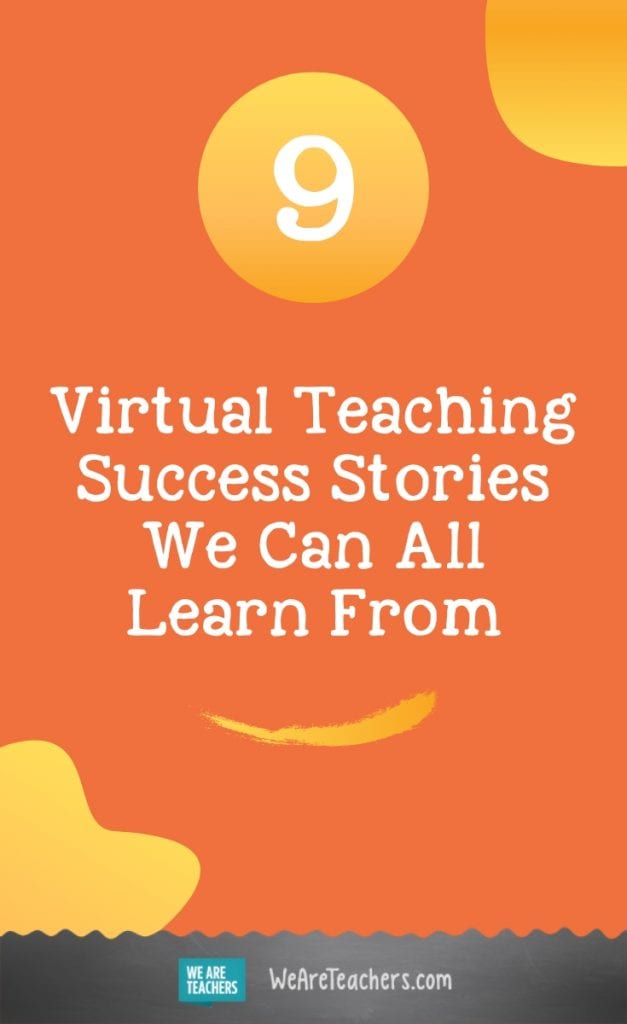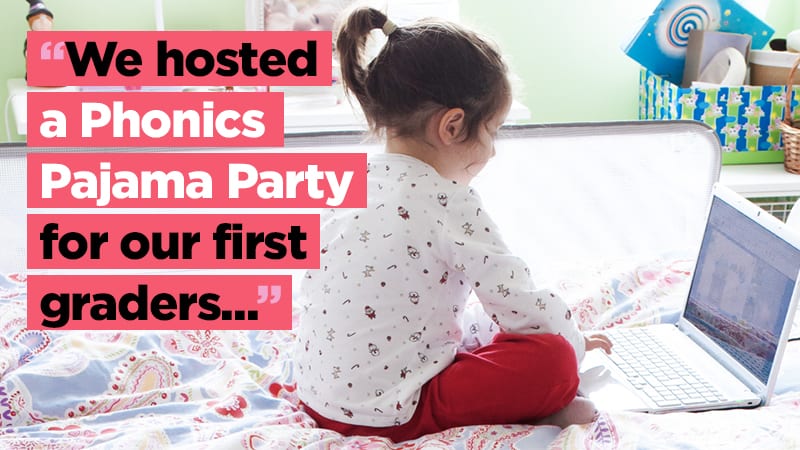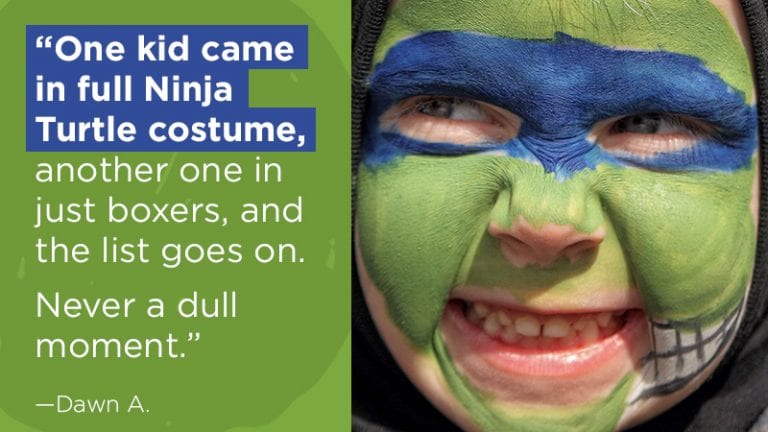With virtual teaching wrapping up for the 2020 year, teachers are reflecting on the semester. They are considering what they want to try in the fall and looking at any virtual teaching success stories.
The reality is, all over the country, teachers have been pouring their hearts, souls, and creativity into bringing education into the homes of their students. Sometimes these students rely on those Zoom calls as the highlight of their day. So what have we learned, and what can we use if virtual teaching is a part of the future?
1. Common household materials can turn into STEM learning
What can a teacher do virtually with 6 drinking straws, 5 mailing labels, and 20 marbles? Quite a lot it seems. Megan Skipworth, head librarian at Chapin High School in El Paso, TX asked her students to look for materials to learn how to invent a vehicle.
Skipworth uses TGR EDU: Explore, where challenges are inspired by the TGR program elements like critical thinking. Challenges can be done by anyone in the family using common household items. They also include a ‘redesign challenge’ to add an extra layer of difficulty. This redesign involves using the existing design and changing up one variable for better results.
2. Choir practice doesn’t have to stop from home
Nothing has been as challenging as teaching performance-based electives virtually. Gym, music, and art teachers around the country scrambled for supplies and techniques. And one middle school music/chorus teacher, Tracy Williamson, united her students in song. For the chorus project, students had to record themselves singing a section of the song “Home” by Phillip Phillips. Then, Williamson put together each student’s unique track to create the cover song. She surprised students by including a video message from teachers and staff throughout the district. She also put it online for the public to view!
Her students also completed their own version of a Tabata workout song using their own instruments and Soundtrap’s online studio’s beats and loops. The workout song was used during PE class too—talk about cross-curricular collaboration.
[contextly_auto_sidebar]
3. The right tools can transform your virtual classroom
Many teachers relied on Google slides, Powerpoint, Prezi, and other presentation tools in their live classroom. But, few transitioned those into their virtual teaching methods like Mr. Jamie Ewing, Science/STEM 5th grade teacher in the Bronx, NY. His Prezi Video about the dying Great Barrier Reef blended the interaction of a top-notch in-person explanation with the clarity of slides kids sometimes need for increased comprehension.
Ewing said in the first few weeks of remote teaching he became “really depressed” because he was sending out lessons that he wouldn’t have used in his classroom. “Teaching science and STEM requires high engagement and pushing student thinking in a more inquiry-based way. Sending out docs and slides are absolutely no better than presenting my students with worksheets: digital worksheets,” he said. “I needed to find a way to recreate the face to face connection while also integrating an interactive way to deliver content that was more like the explorations we did in the classroom.”
His lessons now consist of: a 3 to 5 part series of learning, a read-aloud, a connected learning lesson, and/or a project based learning experience. Even a classmate’s four-year-old sibling watched a Prezi read aloud he created, and the parent sent him a picture. “It’s small pieces of heart, like this that makes everything I’m doing worth every minute of work…” Watch him work his magic here!
4. Evening Q&As help serve working parents
Some teachers have had to coach families through online learning. This requires more involvement than ever before. Joseph Glatzer, a middle school history teacher in the San Francisco Bay Area, has been zooming not just with students, but with their parents.
“Many parents are feeling overwhelmed right now trying to keep track of all their children’s assignments, especially when they have multiple children,” he said. So he and a colleague organized evening hours Zoom meetings so working parents could attend.
“They found it very useful and were able to ask us questions … one parent had made the suggestion that all the teachers put links to their assignments on one page which would be posted on the school website.” He shared these suggestions with their admins to make real change in the school.
5. Special guests can be a game changer
What do a Forbes scientist, a two-time Gold Medal Olympian, and a California State Assemblywoman have in common? They’ve all been featured in Jennifer Cervantes’ virtual classroom as guest speakers. She isn’t stopping there. The K-12 public school teacher has even more Zoom plans with military officer, another Olympian, and a movie star in the upcoming weeks.
Her work has been featured in multiple publications already. And she’s spreading her techniques through free virtual teaching workshops for other teachers. She plans to teach other teachers in the upcoming weeks.
Cervantes says these topics will cover, “Student engagement (I have almost 100% virtual student attendance and 90% of students show video!), Classroom management and control, How to actually make kids want to watch and listen to the TEACHER over TikTok, and strategies to ensure students are engaged in the class and not ghosting!”
She has two daughters under the age of two and hasn’t shied away from showing her face, her family, and her stacks of dishes to make herself seem more human to students, in hopes that they will show up for Zoom calls too. Spoiler alert: it’s working.
6. Kids (and their parents) might welcome a crash course in adulting
Monica Simpson, a 7th and 8th grade health teacher from Little Rock, Arkansas, gave her students a menu of life skills to try out each week. They just had to pick one, and write about what they learned. Students and parents are enjoying the assignments. “I knew students were tired of basic reading assignments,” she says.
Her list of options included: making an “actual” phone call to a friend without texting first, ask your parents to teach you about a bill, cook a recipe from a cookbook, sort laundry after measuring the detergent properly, hunt for an apartment (virtually) with a $1,000 budget, and more. These students are going to be mini-adults post-COVID19.
7. Home visits aren’t canceled, just more creative
Dana Darbyshire, one junior high teacher from Cincinnati, OH left the computer screen behind, went for a jog, and just kept on jogging, making her hometown news in the process. She planned visits to pass each student’s house. The goal was to check on them to make sure they were “going the distance” with virtual learning. Darbyshire gave students advance notice of when she’d be out front and check on them while maintaining social distance.
She is one of many educators across the country who have voluntarily made home visits a priority, showing the world that face-to-face education will never be replaced by a computer.
8. TikTok can be a teaching tool
You know your methods are working when not only current students, but past students, click on your links. Abel Ruiz, a 7th and 8th grade science teacher in Fresno, CA was “skeptical” at first about whether TikTok science experiments would reach students as well as other videos he’s seen fascinate them.
“I knew that if I really wanted them to remember it I would need to present in a way that they would love to consume,” he said. “With that in mind, I created a TikTok showing how different variables affect the production of a solar cell; some included the angle the solar cell made with the sun along with the frequency/color of light. This really served as the bases for the rest of the project as they kept referring to it when thinking about solar cells.”
9. Forget morning meeting and try a pajama party instead
“Classifying anything as a party for students of all ages definitely helps increase engagement,” says Principal Meredith Essalat of Mission Dolores Academy in San Francisco, CA. She participates in calls where a first grade teacher at her school, Rochelle Reid, has been hosting Phonics Pajama parties in the evening.
For 30-40 minutes, the students talk together, and show off their siblings and surroundings. Also, they practice verbal fluency through phonemic awareness activities and work through word problems and estimation games. They even play fun activities like Mad Libs at the end of the sessions. Changing to evening allows parents to be more involved. And parents appreciate the frequency and time of these meetings, which she calls a “celebration of learning, community and friendship.”
What are your virtual teaching success stories? Share in our WeAreTeachers HELPLINE group!
Also, check out this list of Zoom tips and tricks!


